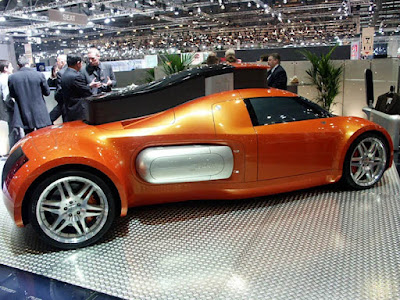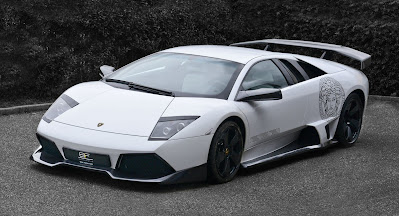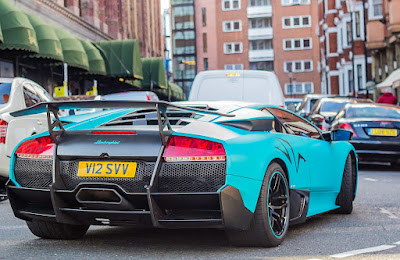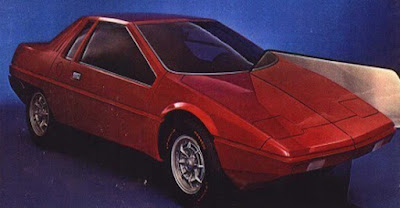Wild ONES - Ideas are the seeds of innovation, especially in the world of automotive design. Sometimes, these ideas are unconventional, bordering on the bizarre, yet they push the boundaries of what is possible. Imagine a sports car equipped with a pop-up bed inside its cabin—a concept that seems more suited to a camper van than a high-performance vehicle. Yet, this very idea was brought to life by München, Germany-based design consultancy, EDAG, becoming one of their most intriguing creations twenty years ago.
 |
| The EDAG genX
concept was designed for individuals who reject traditional norms like fixed
working hours and locations, instead embracing a new form of modern
nomadism. (Picture from: MotorTrend) |
EDAG has a long-standing history of producing visionary and thought-provoking automotive concepts. In 2004, they introduced one of their most intriguing projects: the EDAG genX. This vehicle concept wasn’t just another sports car; it was a glimpse into the future of personal mobility. The EDAG genX was crafted for the next generation of drivers, reflecting an evolving lifestyle where the lines between work and leisure are increasingly blurred.
 |
| The EDAG genX concept featuring a full-size bed into its design, allowing the driver to work, rest, and play—all within the confines of their vehicle. (Picture from: Madle.org) |
The EDAG genX was designed for those living a fast-paced, modern lifestyle where flexibility, mobility, and enjoyment are key. Johannes Barckmann, the head of the EDAG Design Studio then, envisioned the car for individuals who reject traditional norms like fixed working hours and locations, instead embracing a new form of modern nomadism. The EDAG genX embodied this philosophy by incorporating a full-size bed into its design, allowing the driver to work, rest, and play—all within the confines of their vehicle.
 |
| The interior space of the EDAG genX concept could be expanded by raising the roof through an electric motor, providing ample room for a comfortable sleeping arrangement. (Picture from: WeirdWheels) |
Including a bed in a sports car might seem like an odd choice, but it was a strategic decision to cater to the needs of a modern, on-the-go lifestyle. The interior space of the EDAG genX could be expanded by raising the roof through an electric motor, providing ample room for a comfortable sleeping arrangement. This feature made the EDAG genX the first sports car of its kind, combining performance with an unexpected level of comfort.
 |
| The EDAG genX concept also boasted removable external side pods that functioned as versatile luggage modules. (Picture from: WeirdWheels) |
Adding to its versatility, the EDAG genX featured removable external side pods that doubled as luggage modules. These modules could be detached and used as suitcases, serving various purposes—whether for work-related needs, sports equipment, or camping gear. This modular approach ensured that the EDAG genX could adapt to a wide range of activities, offering unmatched flexibility to its users.
 |
| The EDAG genX concept's exterior design was equally striking, featuring a slender waistline inspired by the aerodynamic efficiency of Formula 1 cars. (Picture from: WeirdWheels) |
The exterior design of the EDAG genX was equally impressive, with its slender waistline reminiscent of the aerodynamic efficiency found in Formula 1 cars. The car’s low, flat silhouette and wide stance gave it a commanding presence on the road, exuding power and confidence typical of a high-performance sports car. Despite its radical design, the EDAG genX was equipped with features like all-wheel drive and level regulators, ensuring it could handle various terrains, whether on or off the road.
 |
| The EDAG genX concept’s low, flat silhouette and wide stance gave it a commanding presence on the road, exuding power and confidence typical of a high-performance sports car. (Picture from: WeirdWheels) |
However, the EDAG genX was more of a conceptual exploration than a production-ready vehicle. While it was showcased at the Geneva Motor Show 2004, the practicality of some features, like the sleeping module, remained unclear for real-world use. Additionally, detailed technical specifications were not disclosed, leaving much of the vehicle’s potential to the imagination. Given the niche market for such a unique concept, it seemed unlikely that the EDAG genX would ever enter mass production.
 |
| Despite its radical design, the EDAG genX concept was equipped with all-wheel drive and adjustable level regulators, allowing it to tackle diverse terrains with ease. (Picture from: MotorTrend) |
EDAG's reputation for innovation did not stop with the EDAG genX. In the years following, the company continued to push the envelope with concepts such as the lightweight EDAG Light Cocoon, which boasts a unique textile outer shell, and the autonomous EDAG CityBot designed for urban environments. Their work on the EDAG Soulmate, exploring human-vehicle interaction, and the EDAG Genesis, a forward-looking vehicle chassis, showcases their ability to think outside the box and address future automotive challenges.
 Reflecting on the EDAG genX today, the idea of a sports car with a built-in bed might appear outlandish. However, it represents the kind of forward-thinking and unconventional ideas that fuel innovation in the automotive industry. In a world where the demands of work and life are constantly evolving, perhaps such unconventional ideas hold more relevance than we might initially think. The EDAG genX may never have reached production, but it remains a captivating glimpse into the possibilities of future vehicle design. *** [EKA | FROM VARIOUS SOURCES | EDAG | SUPERCARS.NET | MOTORTREND | DISENO-ART | NEWATLAS | ENGADGET | MADLE.ORG | WEIRDWHEELS ]
Reflecting on the EDAG genX today, the idea of a sports car with a built-in bed might appear outlandish. However, it represents the kind of forward-thinking and unconventional ideas that fuel innovation in the automotive industry. In a world where the demands of work and life are constantly evolving, perhaps such unconventional ideas hold more relevance than we might initially think. The EDAG genX may never have reached production, but it remains a captivating glimpse into the possibilities of future vehicle design. *** [EKA | FROM VARIOUS SOURCES | EDAG | SUPERCARS.NET | MOTORTREND | DISENO-ART | NEWATLAS | ENGADGET | MADLE.ORG | WEIRDWHEELS ]Note: This blog can be accessed via your smart phone




































